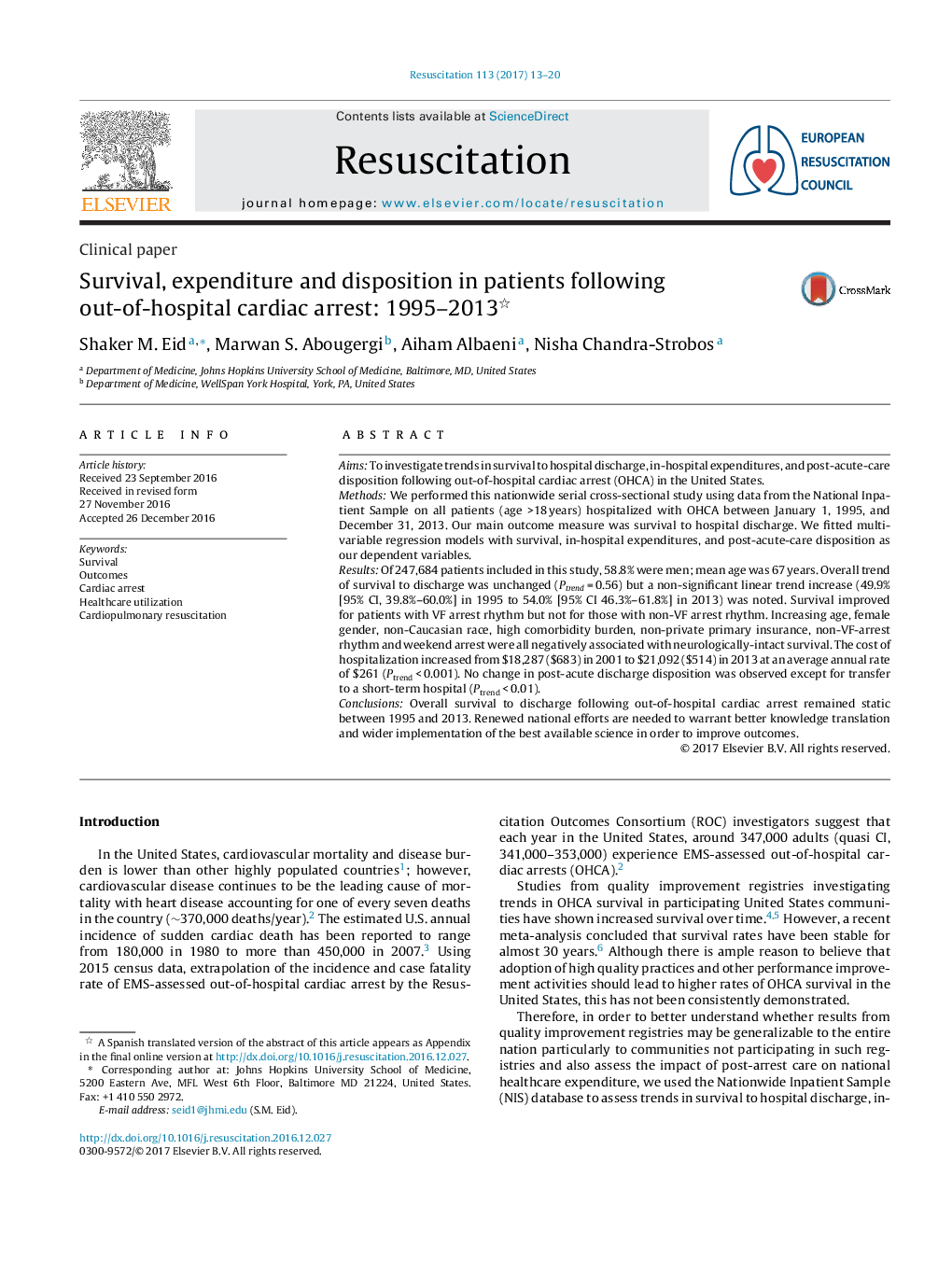| Article ID | Journal | Published Year | Pages | File Type |
|---|---|---|---|---|
| 5620037 | Resuscitation | 2017 | 8 Pages |
AimsTo investigate trends in survival to hospital discharge, in-hospital expenditures, and post-acute-care disposition following out-of-hospital cardiac arrest (OHCA) in the United States.MethodsWe performed this nationwide serial cross-sectional study using data from the National Inpatient Sample on all patients (age >18 years) hospitalized with OHCA between January 1, 1995, and December 31, 2013. Our main outcome measure was survival to hospital discharge. We fitted multivariable regression models with survival, in-hospital expenditures, and post-acute-care disposition as our dependent variables.ResultsOf 247,684 patients included in this study, 58.8% were men; mean age was 67 years. Overall trend of survival to discharge was unchanged (Ptrend = 0.56) but a non-significant linear trend increase (49.9% [95% CI, 39.8%-60.0%] in 1995 to 54.0% [95% CI 46.3%-61.8%] in 2013) was noted. Survival improved for patients with VF arrest rhythm but not for those with non-VF arrest rhythm. Increasing age, female gender, non-Caucasian race, high comorbidity burden, non-private primary insurance, non-VF-arrest rhythm and weekend arrest were all negatively associated with neurologically-intact survival. The cost of hospitalization increased from $18,287 ($683) in 2001 to $21,092 ($514) in 2013 at an average annual rate of $261 (Ptrend < 0.001). No change in post-acute discharge disposition was observed except for transfer to a short-term hospital (Ptrend < 0.01).ConclusionsOverall survival to discharge following out-of-hospital cardiac arrest remained static between 1995 and 2013. Renewed national efforts are needed to warrant better knowledge translation and wider implementation of the best available science in order to improve outcomes.
